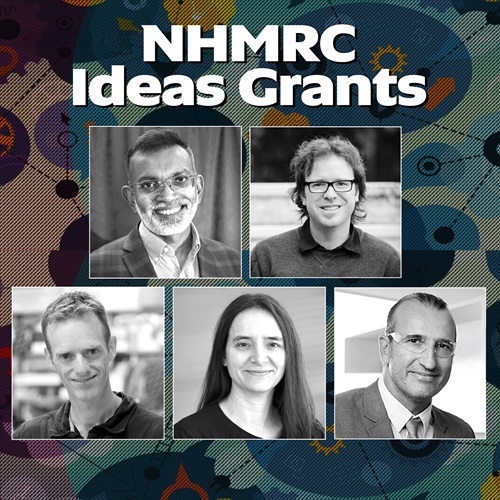 Triple-negative breast cancer patients stand to benefit from a $1.1 million UniSA research project to start in 2025, exploring new strategies to slow the spread of an aggressive class of proteins resistant to treatment.
Triple-negative breast cancer patients stand to benefit from a $1.1 million UniSA research project to start in 2025, exploring new strategies to slow the spread of an aggressive class of proteins resistant to treatment.
The research, led by Associate Professor Philip Gregory, is one of five successful NHMRC Ideas Grants awarded to UniSA researchers for 2025, totalling $5 million in value.
The National Health and Medical Research Council grants, announced today, support innovative health research projects addressing a specific question.
Details of the UniSA NHRMC Ideas Grant projects are:
Associate Professor Philip Gregory, Centre for Cancer Biology ($1,166,928): Uncovering the functions of splice variants driving breast cancer progression
Triple-negative breast cancers are aggressive cancers that readily spread and become resistant to treatments. This research will investigate a class of proteins that are poorly understood but are associated with aggressive features in breast cancer. The information gained will provide unique strategies to slow the spread and counteract the development of resistance in triple-negative breast cancer.
Dr Dot Dumuid, UniSA Allied Health & Human Performance ($1,378,364): Not everyone has the same 24 hours in a day: Addressing time inequality through AI-based personalised time-use interventions
Every day we juggle many competing demands of our time. Incorporating one-size-fits-all time-use interventions (eg increasing physical activity to 30 minutes a day) into our lives can be impossible or unsustainable. This project will develop new methods that search across all daily activities (sleep, sedentary behaviours and physical activities) to obtain a menu of different time-use changes that have the same health benefit, giving people flexibility and choice in how they use their time to build health.
Associate Professor Quenten Schwarz, Centre for Cancer Biology ($1,125,492): Exploring new anti-apoptotic roles of intracrine VEGF in cartilage development and disease
In contrast to its predominant role in blood vessels, the project team have identified a novel molecular pathway through which vascular endothelial growth factor A (VEGF) regulates cartilage survival. Using novel animal models and engineered cells, they intend to unravel how this molecular pathway controls cartilage development. This analysis stands to provide new insight to the origin and treatment of craniofacial birth defects and to the biological roles of VEGF in bone growth, cancer and osteoarthritis.
Professor Michael Samuel, Centre for Cancer Biology ($851,789): Defining the causal relationships between the tumour ECM and cancer outcomes
All tissues are built around a scaffold or matrix of proteins, providing them with rigidity and structure. The matrix is fundamentally changed when cancers arise. These changes are caused by cancer cells, and the tumour matrix provides an environment that allows cancer growth and can help its spread around the body. This project seeks to understand how this tumour matrix fosters cancer growth and spread, with a view to gaining insights to target it as therapy against deadly metastatic cancers.
Professor Peter Hoffmann, UniSA Clinical & Health Sciences ($481,016): Diagnosis of Lymph Node Metastasis in Endometrial Cancer
Metastasis is the primary cause of death from solid cancers, especially in endometrial cancer. In most patients it is impossible to know without radical surgery who is suffering from metastasis. This project will develop a diagnostic method utilising latest mass spectrometry technology to determine these patients. The new diagnostic method will save lives and spare patients unnecessary interventions which are associated with significant morbidity and loss of quality of life.






